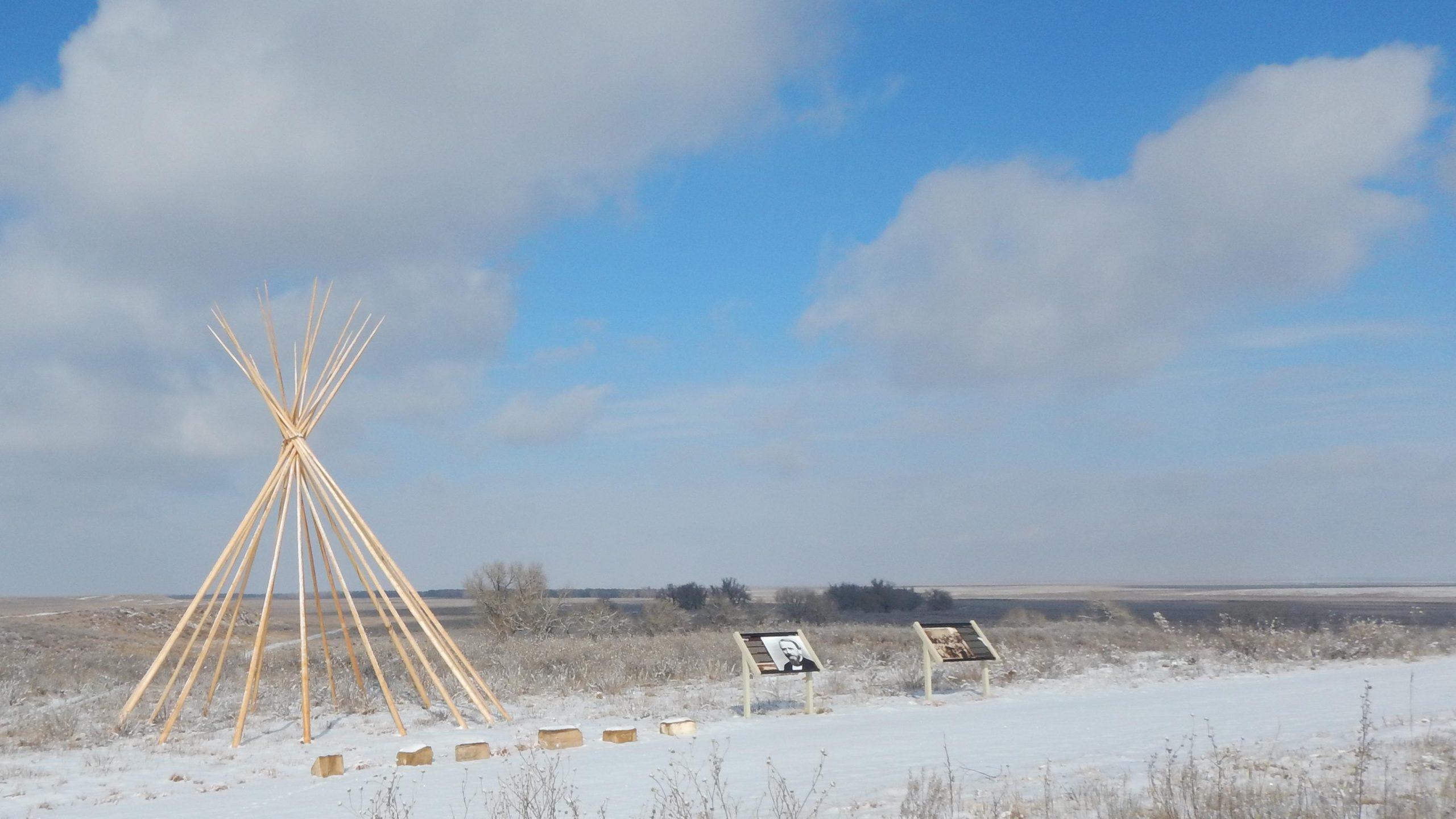Otto Braided Hair's great-grandparents survived the deadliest day in Colorado history.
On Nov. 29, 1864, U.S. soldiers attacked a village of Cheyenne and Arapaho people in eastern Colorado back when the state was a territory. Troops brutally killed more than 200 people -- most of them women, children and elders -- during what's now widely known as the Sand Creek Massacre.
"It's more of a generational trauma," Braided Hair said. "We still have strong feelings and emotions about our history and what happened to our old people, especially in this instance where they were wronged."
The United States government celebrated the atrocity as a military victory. That slowly changed as people spoke out about the unprovoked ambush on a peaceful camp.
Still, the narrative about the Sand Creek Massacre among white historians and lawmakers hasn't always stayed true to what actually occurred.
"Because it happened to the tribes, most people think, 'Well, that's tribal history,'" Braided Hair, a Northern Cheyenne tribal member, said. "It's not, it's everybody's history. It happened in Colorado, so it's a history of Colorado. And then it's U.S. history. It belongs to the public and needs to be told."
Braided Hair is working with History Colorado on a long-term exhibit about the Sand Creek Massacre. The Denver-based museum will share its history and more from the viewpoint of Cheyenne and Arapaho tribal members.
"We want to be involved in telling the story," Braided Hair said. "We haven't had that and didn't have that in the earlier times. History Colorado actually developed an exhibit some years ago without the tribes' involvement or consultation."
The History Colorado Center opened in Denver in 2012. The brand-new space included an exhibit on the Sand Creek Massacre that was supposed to run for five years. But History Colorado closed it to the public after just 45 days and eventually took it down because of criticism from tribal representatives and leadership, who had little input in its development.
"It was a hard lesson to learn," Shannon Voirol, who directs exhibit planning for History Colorado, said.
About eight years ago, History Colorado started to create a more formal partnership with three tribal groups: the Northern Cheyenne Tribe of the Northern Cheyenne Reservation in Montana, the Northern Arapaho Tribe of Wyoming, and the Cheyenne and Arapaho Tribes of Oklahoma.
In 2014, the organization hoped to open a smaller, temporary exhibit in honor of the massacre's 150th anniversary. But that didn't pan out.
"We hadn't yet found productive ways to work together, and those plans stalled," Voirol said.
History Colorado also runs the Ute Indian Museum in Montrose. The organization has worked closely with Ute tribes of Colorado and Utah on the building's design and exhibits. History Colorado curated a sister exhibit, "Written on the Land Ute Voices, Ute History," in Denver with the same collaborative approach.
"That gave me a lot of experience in this work and in the listening that it requires," Voirol said. "Now we can't imagine doing it any differently, and it's really required that our whole institution flexes in some ways."
Those lessons are guiding History Colorado in how it recounts the Sand Creek Massacre and honors the lives, histories and lasting cultures of those who were attacked. The center plans to run its exhibit for five years starting in the fall of 2022.
"We are taking the time to do it right," Voirol said. "I'm really happy that our leadership understands that we want the tribes' buy-in on this. And if it's starting to feel like for whatever reason they are not happy with it, they're not owning it, then we've heard pretty clearly that we can take a pause again."
The National Endowment for the Humanities has awarded History Colorado $400,000 to support the effort. That grant will help pay for things like exhibit materials and trips for museum staff to reservations to visit with tribal members. Some of the money will go to consultants, Voirol said.
"It's definitely a sign that shows some commitment and dedication [from History Colorado]," Braided Hair said.
As a descendent of survivors, he hopes the exhibit can bring some healing to the tribes, memorialize the victims and educate the public.
Braided Hair said it's hard to talk about his great-grandfather, one of the hundreds of Cheyenne and Arapaho who had gathered along a dry creek bed in November 1864, expecting to negotiate peace. Instead, he was shot by U.S. troops, but still managed to save his wife's life and join the rescue team to search for other survivors.
"It's a tragedy, it's terrible," Braided Hair said. "He managed to put my great-grandmother on a horse, and she rode off with the herd. She happened to be pregnant with her first son, and later that year he was born."
The exhibit will also explore the Sand Creek Massacre National Historic Site, which saw some controversy of its own, and highlight the annual healing run from the site of the massacre to the state Capitol. It will also document tribal histories and their contemporary cultures.
"We are just in the early stages of identifying what we want to display and the storyline," Braided Hair said. "I think the positive is that the Cheyenne and Arapaho definitely are resilient and have a lot of pride, despite what happened during those times."











